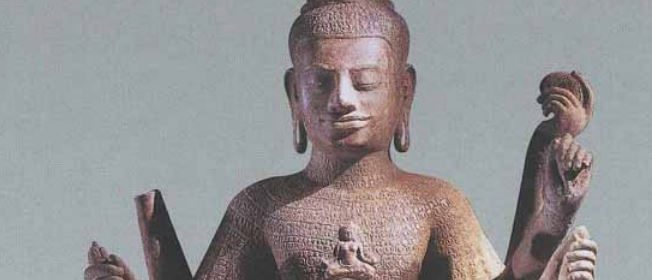Looted sculpture once at Denver Art Museum part of federal seizure tied to indicted art dealer Douglas Latchford

The federal government this week moved to seize 35 Cambodian and Southeast Asian antiquities connected to an indicted art dealer — including one sculpture that previously sat in the Denver Art Museum.
The items in question were sold to a private collector by Douglas Latchford, who amassed one of the world’s largest private collections of Khmer antiquities before being charged in 2019 with running a years-long scheme to sell looted relics on the international art market, federal prosecutors alleged in a civil forfeiture complaint filed Tuesday in the U.S. District Court for the Southern District of New York. Latchford died in 2020 before he could stand trial.
Latchford “sold the collection to its present owner… with false statements and fake provenance documents intended to hide the fact that the antiquities were the products of looting, and then imported the antiquities through lies on customs paperwork,” federal prosecutors alleged in the complaint.
The collector is not named in court documents, but the New York Times on Wednesday identified the individual as James H. Clark, who co-founded Netscape, one of the earliest web browsers, in 1994.
Clark spent roughly $35 million on the art collection, he told The Times, though the pieces are now worth far more. Investigators convinced him to give it all back, he said, in the hopes that it might inspire others to do the same.
“As a naïve person,” Clark told the newspaper, “I had apparently somewhat ignorantly acquired one of the nicest private collections of Cambodian antiquities.”
One of these relics includes a late 12th-century Bayon-style sandstone sculpture depicting the eight-armed Avalokiteshvara. When Latchford sold the sculpture to Clark around 2003, it was on loan at the Denver Art Museum, where Latchford’s associate — only referred to in court documents as “the Scholar” — worked as a volunteer research consultant, prosecutors said.
Latchford had told the Denver Art Museum that the piece was acquired from an individual known as the “False Collector,” according to the complaint — someone that the art dealer would use to forge the origins of items so they could be sold on the open market without suspicion of looting.
A Denver Art Museum spokesperson said in an email that the sculpture was on loan to the museum from February 2001 through December 2003.
“The museum was not a party to the acquisition or sale of this piece, and has no details about those transactions,” Kristy Bassuener, a museum spokesperson, said in the email.
As part of the sale, prosecutors allege, Latchford provided the private collector with a letter from this “False Collector,” stating that this person had acquired the sculpture from Vietnam between 1964 and 1966.
But before and after the sale of this sculpture and a second item, Latchford “strongly implied” to an individual — known in the complaint as “the Decorator” — that he himself had acquired the items at the time of their excavation from Cambodia.
“This office continues to trace and recover the many stolen cultural treasures that Douglas Latchford sold and scattered far from their home countries,” U.S. Attorney Damian Williams said in a news release announcing the forfeiture. “Through this action, the United States reaffirms its commitment to redressing the wrongs committed by Latchford and other looters who would exploit and profit from the pain and disruption of war.”
The Cambodian government in recent years has been aggressively combing the globe for cultural items that were plundered from its centuries-old historical sites during Pol Pot’s dictatorial regime in the 1970s and subsequent decades of civil war and turmoil.
Latchford, authorities believe, was one of the most egregious offenders. The “Pandora Papers” investigation in October revealed a host of museums from Denver to Great Britain to Australia still counted Latchford’s items as part of their collections, and in subsequent months there has been pressure to repatriate the looted antiquities.
The Denver Art Museum in November voluntarily relinquished four Cambodian relics connected to Latchford after federal prosecutors sought their seizure. Authorities previously said Latchford repeatedly lied to the museum about the provenance — or ownership history — of other items the art dealer sold to the museum.
Latchford had a known Colorado associate named Emma Bunker, who was affiliated with the Denver Art Museum for 40 years before her death last year, serving on the museum’s board of trustees and as a volunteer helping secure lecturers and speakers. The two wrote three books together exploring Khmer art, and enjoyed a 30-year friendship.
The New York Times reported in 2017 that she was pegged by Manhattan prosecutors as “co-conspirator No. 2” involved in a scheme — along with Latchford — to help a prominent New York gallery owner falsify documentary history of looted Cambodian relics.
Bunker was never charged with a crime and is not named in Tuesday’s civil complaint.
Source: Read Full Article

